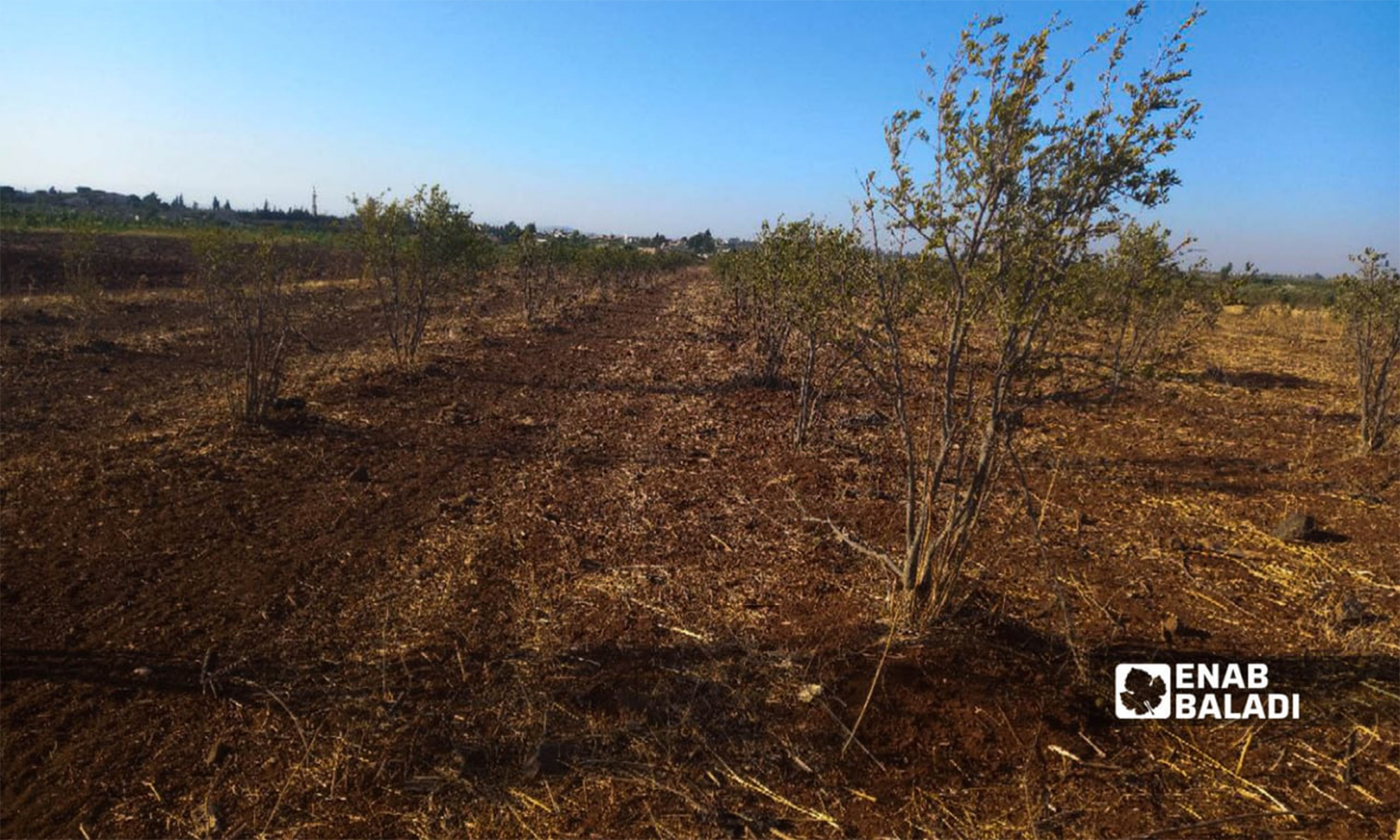



Enab Baladi – Halim Muhammad
A state of worry and concern prevails among the residents of the western countryside of Daraa, who have been suffering for months from the drying up of the irrigation water.
The vital resource lies in water surplus to the need for drinking in relation to springs and in random wells, which turned into a major source of irrigation water during the past ten years.
The crisis coincides with the Syrian regime’s failure to pay any attention to the issue of securing irrigation or drinking water in the southern governorate of Daraa, despite the expansion of drought that affects wells and springs and has reached stages threatening the loss of water resources.
Ali, 35, became in a deplorable condition after his inability to water the pomegranate crop, and the appearance of signs of drought on the trees, after the artesian well on which he relied for watering his crop dried up, on an area of about 15 dunams (15000 m2), nearly ten years ago, according to what he told Enab Baladi.
Ali, of the town of Tal Shihab, said that this year witnessed the first time that his well dried up completely, as its water level gradually declined during the past years.
The lack of irrigation water left its effects on his pomegranate crop, as he is supposed to water it once every 20 days starting in early May, he added.
Hussein, 28, based in Zayzun village, told Enab Baladi that the dryness of the wells pushed him to halt irrigating his 20-dunam land and just water ten.
He added that since the beginning of July, news has been circulating about new wells drying up every day, which portends a catastrophe for the green cover in the western countryside of Daraa, considering that the reason for the drying up of random wells is due to their large number, without observing the technical conditions for drilling them.
According to what Enab Baladi monitored, Daraa’s farmers began to fear the fate of the wells’ water after Lake Muzayrib dried up in the summer of 2017.
Despite it returning in the winter of 2018, the farmers no longer depend on it for watering since the lake had not been filled at all last winter.
The drought also expanded this year to include Lake al-Ajami, the springs of Oyoun al-Abed, Lake Zayzun, and the springs (Oyoun) of al-Baja in Nawa town, and the water level of al-Sakhna springs has severely decreased, which alerted the residents of Tal Shihab who depend on the springs as the main source of drinking water.
The Director of Water Resources in Daraa, Muneer al-Awda, said in an interview with the state-run news agency (SANA) in July 2020 that the reason for the drying up of Lake Muzayrib is the presence of more than 100 wells around the lake’s water basin.
Al-Awda estimated the number of violating wells in Daraa governorate at about 4000, which contributed to the drying up of 13 springs in the governorate, while farmers interviewed by Enab Baladi estimated that there are more than 10,000 random wells in the area.
The impact of the “alarming” drying of springs and wells in the western countryside of Daraa was not restricted to agriculture only but also affected drinking water.
In August 2021, international aid organizations warned that millions of people in Syria and Iraq are at risk of losing access to water, electricity, and food amid high temperatures and record low water levels due to lack of rainfall and drought.
According to the Associated Press, the two countries need to move quickly to combat the acute water shortage.
The drought will also disrupt electricity supplies, as low water levels affect dams, which in turn affects basic infrastructure, including health facilities, AP reported.
if you think the article contain wrong information or you have additional details Send Correction